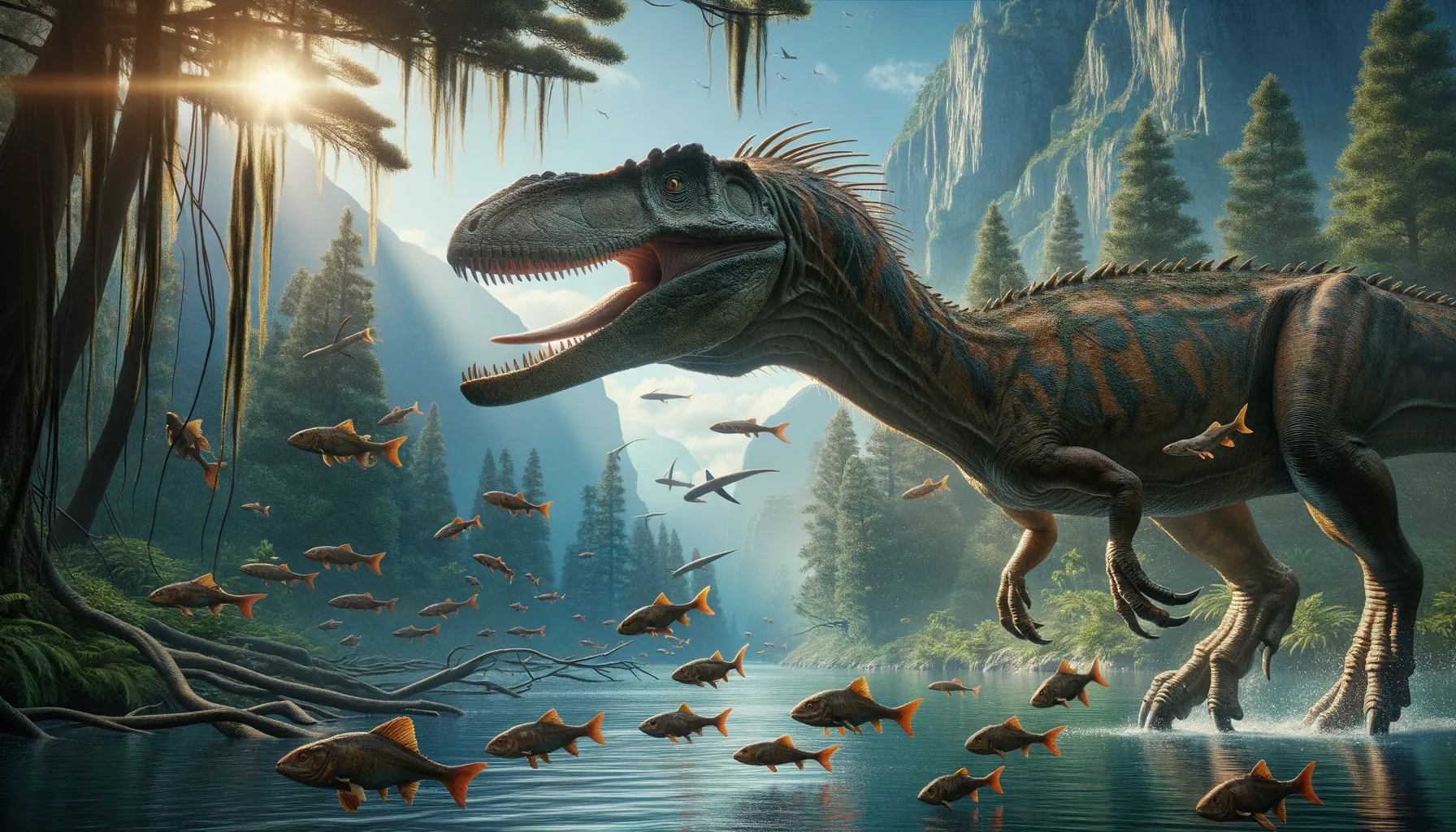
Baryonyx
The fish-eating giant of the Cretaceous!
Period
Cretaceous
Length
About 9.5 meters (31 feet) long.
Height
Approximately 2.5 meters (8.2 feet) tall at the hips.
Weight
Estimated to weigh around 1,200 kilograms (2,645 pounds).
Baryonyx was a carnivorous dinosaur with unique adaptations for catching fish. Its most distinctive features are its long, crocodile-like snout and large claw on each thumb, which likely helped it in hunting aquatic prey. Living during the Early Cretaceous period, it occupied regions in what is now Europe. Discoveries of Baryonyx fossils have provided significant insights into theropod diversity and behavior, especially regarding their dietary habits.
Diet
Baryonyx primarily ate fish, as evidenced by fossilized fish scales found in its stomach region. Its crocodile-like snout and sharp teeth were well-adapted for catching slippery aquatic prey. It may have also scavenged other dinosaur carcasses when opportunities arose.
Hunting
Baryonyx likely used its long claws and snout to snatch fish from the water, similar to a heron or modern crocodile. It might have frequented riverbanks and lakeshores, waiting patiently for fish to come close before striking. Evidence of fish remains found with Baryonyx fossils supports its piscivorous (fish-eating) behavior.
Environmental challenges
Baryonyx faced environmental challenges like fluctuating water levels and changing aquatic ecosystems, which would have impacted its prey availability. It lived in an area that was periodically flooded, meaning it needed to adapt to these conditions for food sourcing. Competition with other similarly-sized predators and possible threats from larger theropods may have influenced its behavior and hunting strategies.
Speed
It was likely a slow-moving dinosaur, adapted for fishing rather than sprinting.
Lifespan
Exact lifespan is not known, but likely similar to other theropods of its size, potentially several decades.
First discovery
Discovered in 1983 in Surrey, England by an amateur fossil hunter named William Walker.
Fun Facts
- Baryonyx was a dinosaur that lived about 125 million years ago during the Early Cretaceous period.
- It had a long, crocodile-like snout with over 90 sharp teeth, perfect for catching fish.
- Baryonyx's first bones were discovered in 1983 in Surrey, England, by an amateur fossil hunter.
- Its name means 'heavy claw,' referring to the large claw on its first finger, which measured about 31 centimeters.
- Unlike many dinosaurs, Baryonyx was most likely a piscivore, meaning it primarily ate fish.
- Fossils of Baryonyx have also been found in other parts of Europe, like Spain and Portugal.
- Experts believe that Baryonyx may have used its claws to catch fish in rivers and lakes.
Growth and Development
Baryonyx's growth and development were typical of theropods, with rapid growth early in life slowing as it matured. Juveniles likely relied more on small prey or scavenging while learning vital skills for hunting. As they grew, they developed stronger limbs and claws essential for catching their main food source: fish.
Habitat
Baryonyx inhabited floodplains, deltas, and coastal environments in what is now Europe. These areas were rich in waterways, providing abundant fish and other small aquatic creatures. The presence of forests and vegetation suggests a diverse ecosystem where it could find both food and refuge.
Interaction with other species
Baryonyx shared its environment with various other dinosaurs and prehistoric creatures, some of which were potential competitors or threats. The fossil record shows it coexisted with other theropods and herbivorous dinosaurs, possibly competing for similar resources. Evidence suggests Baryonyx might have avoided direct conflicts by focusing on more aquatic-based diets.
Natural lifespan
Baryonyx's natural lifespan might have extended up to a few decades, similar to other large theropods.
Reproduction
As with many theropods, Baryonyx likely laid eggs in nests, possibly in secluded areas near water to ensure a stable food supply for hatchlings. Parental care might have been limited, with hatchlings having to fend for themselves early on. Nesting sites would have provided protection from predators and environmental factors, though specific behaviors remain speculative.
Social behaviour
Baryonyx's social behavior is not well-documented, but it might have been solitary like many modern carnivores. Some evidence suggests possible groupings during the breeding season or in areas with abundant food. Its behavior patterns likely changed with age and environmental pressures.
Fossil locations
Most Baryonyx fossils have been found in the United Kingdom, specifically in the Wealden Group of rock formations. This location has yielded several well-preserved specimens that have helped paleontologists understand more about its anatomy and lifestyle. Additional finds elsewhere in Europe suggest it had a broader range than initially thought.
